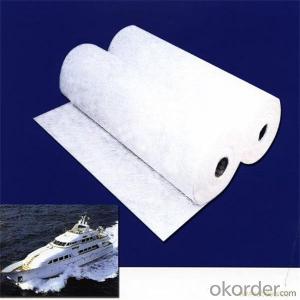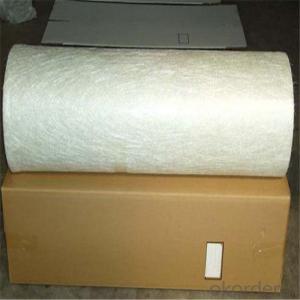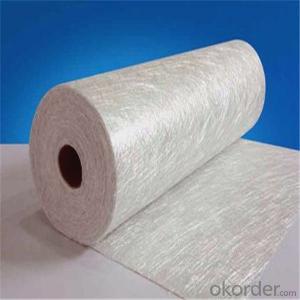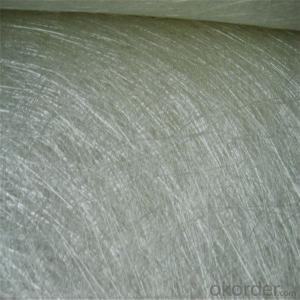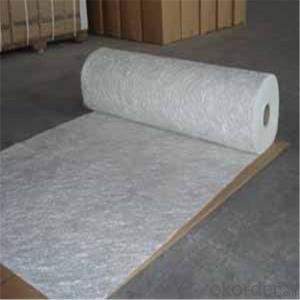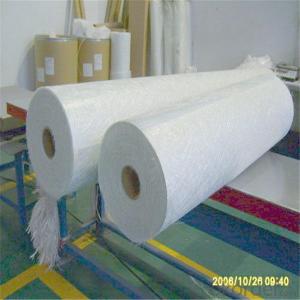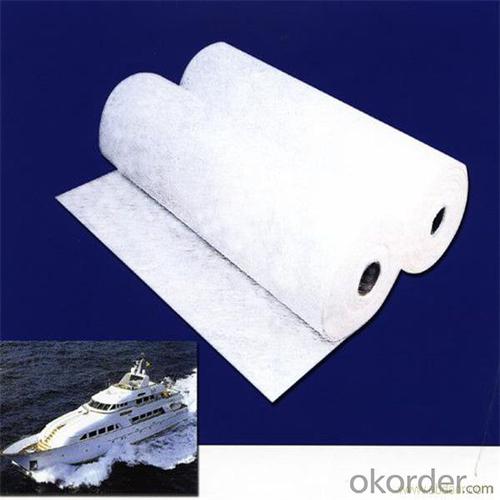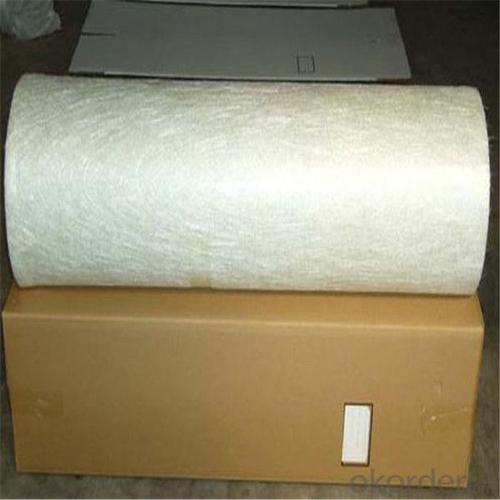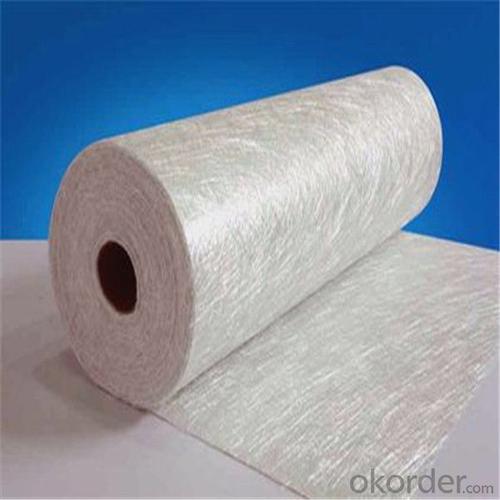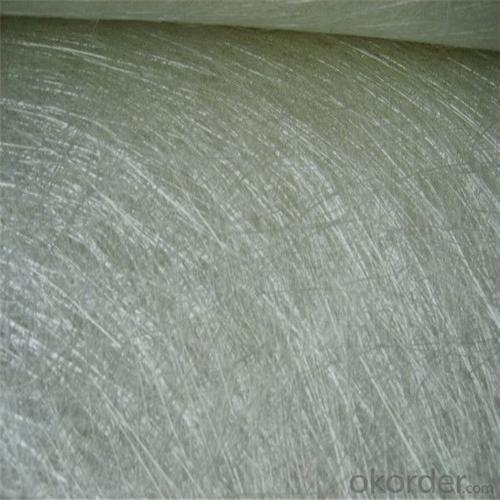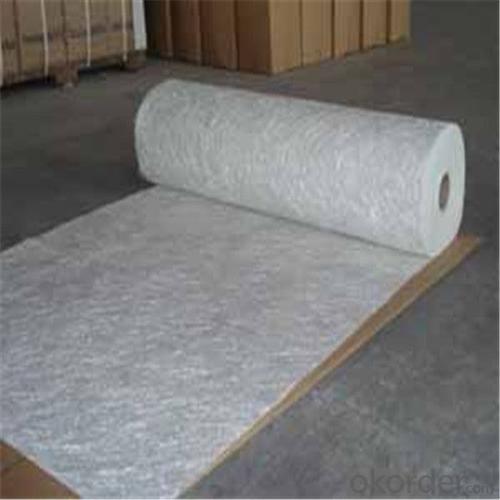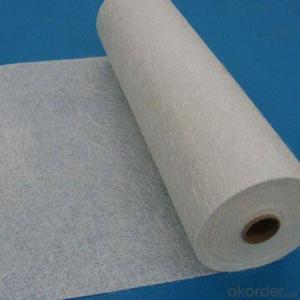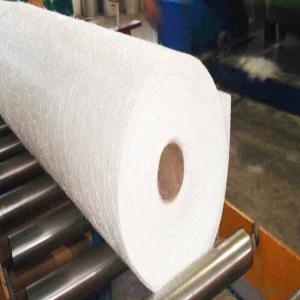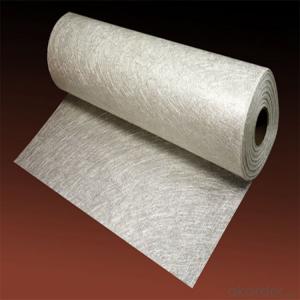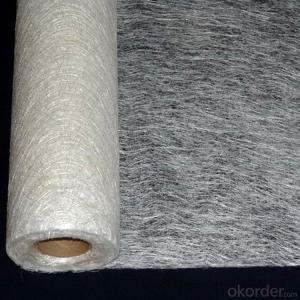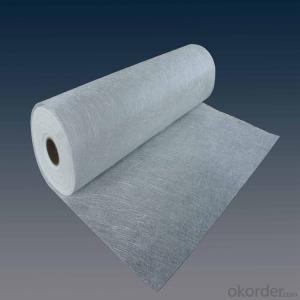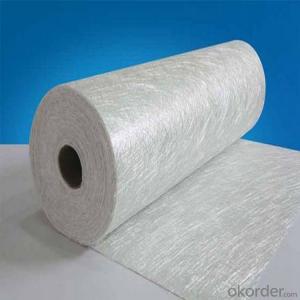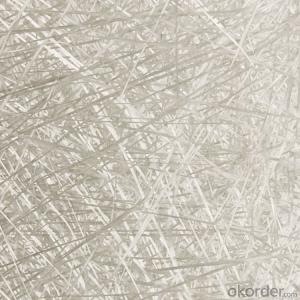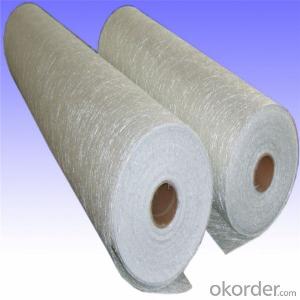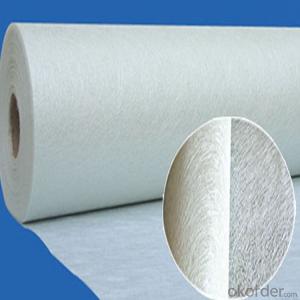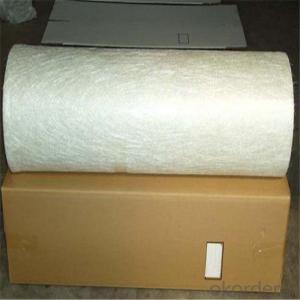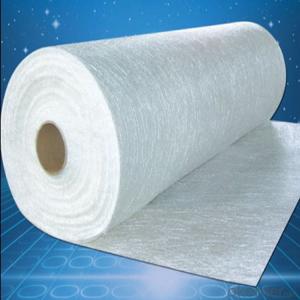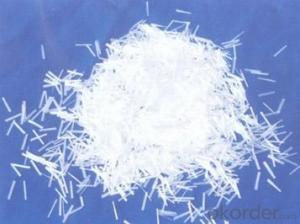Fiberglass Chopped Strand China E-Glassfiberglass Chopped Stand Mat
- Loading Port:
- Tianjin
- Payment Terms:
- TT OR LC
- Min Order Qty:
- 100 m.t.
- Supply Capability:
- 20000 m.t./month
OKorder Service Pledge
Quality Product, Order Online Tracking, Timely Delivery
OKorder Financial Service
Credit Rating, Credit Services, Credit Purchasing
You Might Also Like
Quick Details
| Technique: | Chopped Strand Fiberglass Mat (CSM) | Dimensions: | 450gsm | Mat Type: | Continuous Filament Mat |
| Fiberglass Type: | E-Glass | Softness: | softness | Place of Origin: | Jiangxi, China (Mainland) |
| Brand Name: | cnbm | Model Number: | 450gsm | color: | white |
| fiberglass type: | E glass | product: | e-glass powder chopped stand mats | binder: | powder or emulsion |
| width: | 1040 or 1270mm, as your requirement | weight: | 30 or 45kg/roll | paper tube diameter: | 90mm |
| outer diameter of roll: | 256mm | packing: | plastic film+carton box + pallet |
Packaging & Delivery
| Packaging Details: | plastic film+carton box + pallet |
| Delivery Detail: | 15-20days |
Specifications
1.e-glass powder chopped stand mats
2.binder:power or emulsion
3.width:1040mm or 1270mm
4.weight:450gsm
Picture
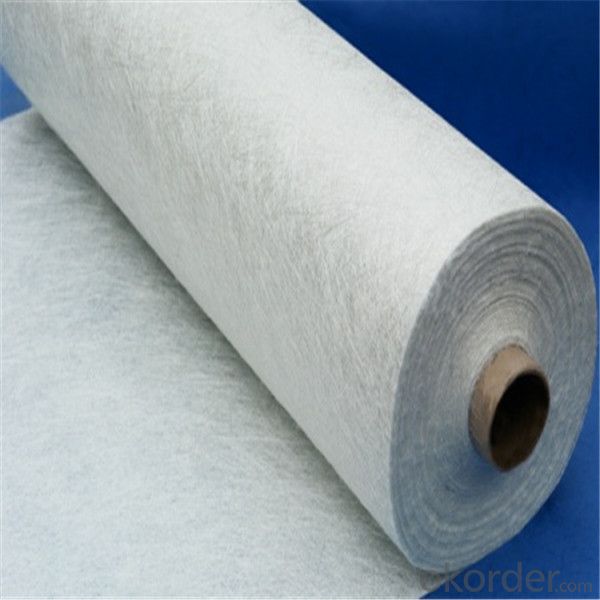
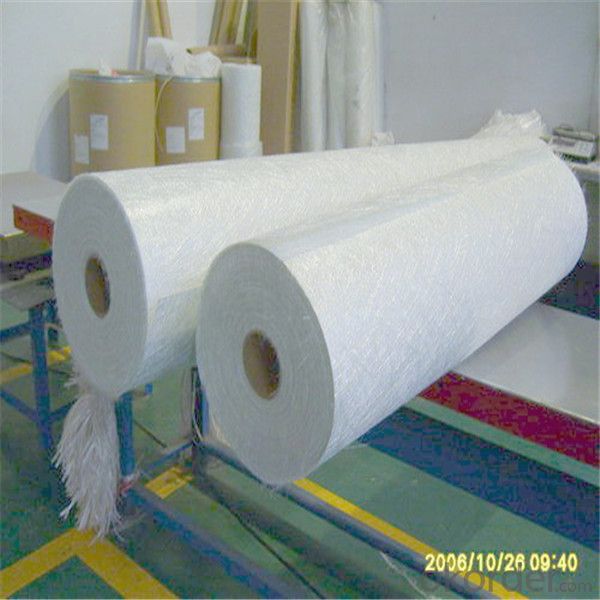

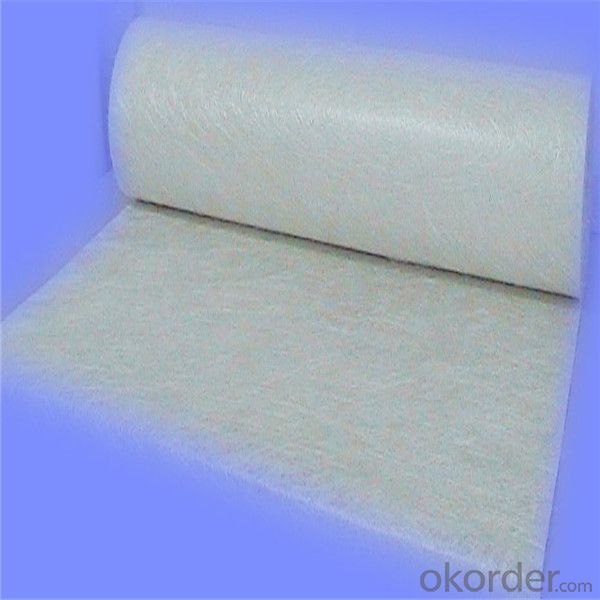
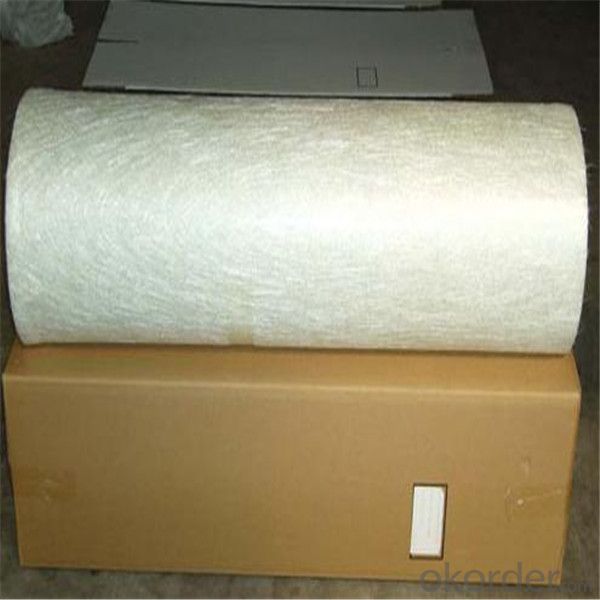
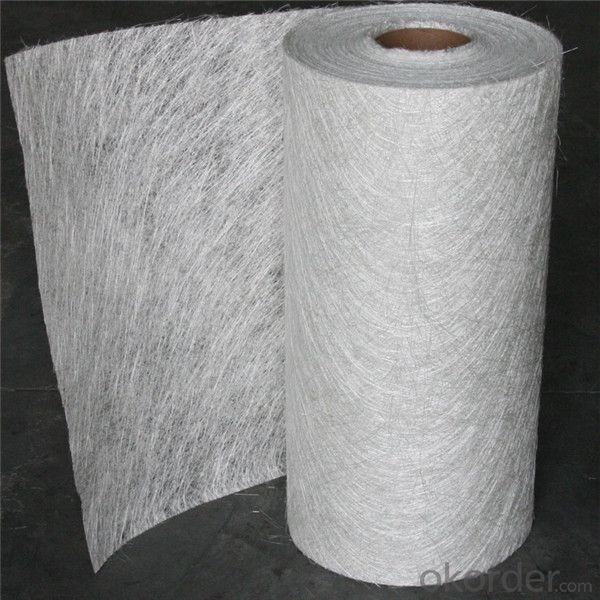
- Q: Can glass fiber be recycle? There are raw silk and shred silk.. .
- Made into reinforced material
- Q: What are the adhesion properties of fiberglass chopped strand?
- Several factors can affect the adhesion properties of fiberglass chopped strand. The type of resin or binder used plays a significant role in determining adhesion. Fiberglass chopped strand is commonly combined with resins like polyester, epoxy, or vinyl ester, and the adhesion between the strands and resin is crucial for the overall strength and performance of the composite. Surface treatment also impacts adhesion. Silane coupling agents or sizing agents are often applied to improve bonding between the fiberglass and resin. These treatments create chemical bonds that enhance adhesion strength. The length and diameter of the chopped strands also influence adhesion. Longer strands provide better mechanical interlocking with the resin, resulting in improved adhesion. Similarly, larger diameter strands have more surface area for bonding, leading to increased adhesion strength. In conclusion, the adhesion properties of fiberglass chopped strand depend on the type of resin or binder used, the applied surface treatment, and the length and diameter of the strands. Careful selection and optimization of these factors ensure strong and durable adhesion between the fiberglass chopped strand and resin, guaranteeing the desired performance of the composite material.
- Q: Does fiberglass chopped strand have any fungal resistance?
- Yes, fiberglass chopped strand does have some level of fungal resistance. The inorganic nature of fiberglass makes it less susceptible to fungal growth compared to organic materials. However, it is still important to note that prolonged exposure to high moisture or humid conditions can potentially promote fungal growth on the surface of fiberglass. Regular cleaning and maintenance are necessary to ensure the longevity and fungal resistance of fiberglass chopped strand.
- Q: What are the impact strength properties of fiberglass chopped strand?
- The impact strength of fiberglass chopped strand is impressive, providing exceptional resistance to both impact and stress. This is primarily because the fiberglass material itself possesses inherent strength and rigidity. The chopped strands, consisting of short pieces of glass fibers randomly arranged and held together by a resin matrix, contribute to the material's ability to withstand high impact forces without breaking or fracturing. Due to its outstanding impact strength properties, fiberglass chopped strand is highly suitable for applications where impact resistance is of utmost importance. It is widely used in the manufacturing of various products, including automotive parts, boat hulls, sporting equipment, and construction materials. In these applications, the material effectively absorbs and disperses impact forces, minimizing the risk of damage or failure. Moreover, by incorporating other reinforcing materials or additives, fiberglass chopped strand can offer even greater impact resistance. For instance, the addition of fillers or modifiers to the resin matrix can further enhance the material's impact strength properties. This flexibility allows for customization and optimization of the material's performance to meet specific application requirements. To summarize, fiberglass chopped strand exhibits remarkable impact strength properties, making it a durable and trustworthy material. Its ability to withstand impact forces without breaking or fracturing renders it suitable for a wide range of applications where impact resistance is vital.
- Q: Can fiberglass chopped strand be used for thermal insulation?
- Yes, fiberglass chopped strand can be used for thermal insulation. It is a commonly used material for insulating applications due to its low thermal conductivity and ability to trap air pockets, providing effective insulation against heat transfer.
- Q: What are the typical moisture absorption characteristics of chopped strand composites?
- Chopped strand composites typically exhibit excellent moisture absorption resistance due to the nature of their construction. The chopped strand mat or fabric used in these composites is typically made from glass fibers or other high-performance materials that have inherently low moisture absorption properties. Additionally, the matrix material used in the composite, such as a resin or polymer, is often chosen for its hydrophobic nature, further reducing moisture absorption. This combination of low moisture absorption fibers and hydrophobic matrix material results in chopped strand composites that are highly resistant to moisture absorption. In practical terms, this means that these composites are less likely to experience dimensional changes, warping, or degradation when exposed to moisture or high humidity environments. However, it is important to note that the moisture absorption characteristics of chopped strand composites can still vary depending on the specific materials used and the manufacturing process employed. For instance, if the composite is not properly sealed or has defects in its structure, it may be more susceptible to moisture absorption. Additionally, certain types of resins or fibers may have higher moisture absorption rates than others. In general, though, chopped strand composites are known for their low moisture absorption characteristics, making them a popular choice for applications where moisture resistance is important, such as in marine, automotive, or construction industries.
- Q: How does the chemical resistance of fiberglass chopped strand compare to other reinforcing materials?
- The chemical resistance of fiberglass chopped strand is generally quite high compared to other reinforcing materials. Fiberglass is made from a combination of glass fibers and resin, which provides it with excellent resistance to a wide range of chemicals, including acids, alkalis, solvents, and corrosive substances. Compared to other reinforcing materials such as steel or aluminum, which are prone to corrosion when exposed to certain chemicals, fiberglass chopped strand maintains its structural integrity and performance even in harsh chemical environments. This makes it a preferred choice for applications where chemical resistance is a critical factor, such as in the manufacturing of chemical storage tanks, pipes, and other chemical handling equipment. Additionally, fiberglass chopped strand is also known for its resistance to UV radiation and weathering, further enhancing its durability and longevity in various environments. However, it is important to note that the specific chemical resistance of fiberglass chopped strand can vary depending on the type of resin used and the manufacturing process, so it is always advisable to consult the manufacturer or supplier for detailed information on the chemical compatibility of a specific fiberglass product.
- Q: How does the toughness of the chopped strand affect its performance?
- The toughness of the chopped strand directly affects its performance in several ways. Firstly, a higher toughness indicates a greater resistance to breakage or failure under stress. This means that a chopped strand with higher toughness will be able to withstand more strain or force before it fractures or tears. This is particularly important in applications where the chopped strand is subjected to high levels of mechanical stress or impact, such as in reinforced composites or structural components. Additionally, the toughness of the chopped strand also impacts its ability to maintain its integrity and mechanical properties over time. A higher toughness generally indicates a greater ability to resist degradation or wear, ensuring that the chopped strand remains effective and reliable in its intended application for a longer period. This is crucial in industries where durability and longevity are critical factors, such as automotive, aerospace, or construction. Moreover, the toughness of the chopped strand can also influence its handling and processing characteristics. A higher toughness may make the chopped strand more difficult to cut or manipulate during fabrication, requiring specialized equipment or techniques. On the other hand, a lower toughness may make the chopped strand more prone to breakage or damage during handling, leading to potential quality issues or decreased performance. In summary, the toughness of the chopped strand directly impacts its performance by determining its resistance to breakage, ability to maintain mechanical properties over time, and handling characteristics. Therefore, understanding and optimizing the toughness of the chopped strand is crucial in ensuring its effectiveness and reliability in various applications.
- Q: How does the fiber breakage of fiberglass chopped strand affect the strength of composites?
- The fiber breakage of fiberglass chopped strand can significantly affect the strength of composites. When fibers break, their load-carrying capacity decreases, leading to a reduction in the overall strength of the composite material. Additionally, the presence of broken fibers can create stress concentrations, weakening the material and making it more prone to failure. Therefore, minimizing fiber breakage is crucial in maintaining the integrity and strength of composites.
- Q: What are the surface finish options for fiberglass chopped strand?
- There are several surface finish options available for fiberglass chopped strand. These options include: 1. Smooth Finish: This finish option involves the use of a smooth gel coat or resin layer on the surface of the fiberglass chopped strand. This creates a smooth and glossy surface, which is often desired for aesthetic purposes or to enhance the overall appearance of the product. 2. Textured Finish: A textured finish can be achieved by adding additives or fillers to the gel coat or resin layer. This creates a textured surface that can provide improved grip or enhanced visual appeal. Textured finishes are commonly used in applications where slip resistance is important, such as in boat decks or industrial flooring. 3. Matte Finish: A matte finish is achieved by adding a matting agent to the gel coat or resin layer. This creates a non-glossy surface that has a more natural or subdued appearance. Matte finishes are often preferred in applications where glare or reflection needs to be minimized, such as in automotive interiors or architectural applications. 4. Pigmented Finish: Fiberglass chopped strand can also be finished with pigmented gel coats or resins, which provide a wide range of color options. This allows for customization and adds visual appeal to the product. Pigmented finishes are commonly used in applications such as automotive parts, consumer products, and architectural elements. 5. Polished Finish: For a high-gloss, mirror-like appearance, a polished finish can be achieved by sanding and polishing the surface of the fiberglass chopped strand. This option requires additional labor and expertise, but it can result in a premium finish that is often desired in high-end applications such as yacht hulls or luxury automotive components. These surface finish options for fiberglass chopped strand offer a variety of choices to meet different functional and aesthetic requirements, and manufacturers can select the most suitable finish based on the intended application and desired outcome.
Send your message to us
Fiberglass Chopped Strand China E-Glassfiberglass Chopped Stand Mat
- Loading Port:
- Tianjin
- Payment Terms:
- TT OR LC
- Min Order Qty:
- 100 m.t.
- Supply Capability:
- 20000 m.t./month
OKorder Service Pledge
Quality Product, Order Online Tracking, Timely Delivery
OKorder Financial Service
Credit Rating, Credit Services, Credit Purchasing
Similar products
Hot products
Hot Searches
Related keywords
